Thingiverse
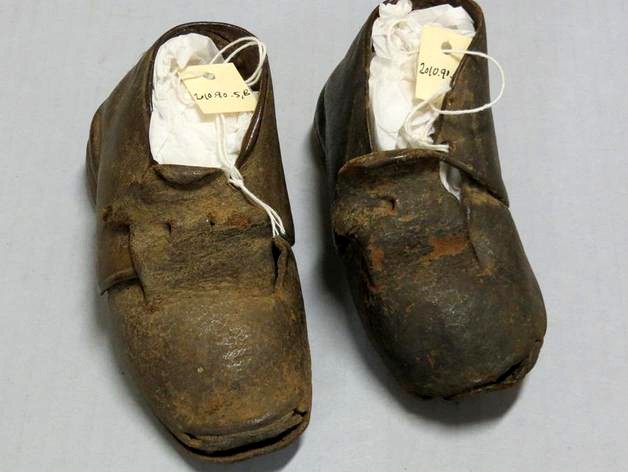
19th Century Leather Children's Shoe: by smlee
by Thingiverse
Last crawled date: 2 years, 12 months ago
A Shoe and the Historical Record
================================
On October 7, 2014, students in Dr. Susanna Lee’s Digital History class (HI 534) went to the North Carolina Museum of History to participate in a new 3D-scanning project that sought to make items in the museum’s collection available as 3D scans to mass audiences cheaply and effectively. The project was an exploration into the cost effectiveness of 3D technology for museums and the methodological problems and challenges with using 3D technology to present historical artifacts. One of the objects that we scanned was a child’s leather shoe (Accession # 2010.90.5) made by an enslaved person in North Carolina. The shoe originated from Cleveland County, North Carolina, and was donated by the descendants of the Nowlin/Nolin/Nolan family (multiple spellings).
Scanning Process
We scanned the shoe using the MakerBot Digitizer 3D desktop scanner. The scanner is a relatively affordable option for those interested in digital scanning, costing approximately $799. It provides relatively detailed scans of smaller objects that can easily fit on the scanner’s circular platform. The technology also works automatically, making the scanning process relatively foolproof and a good option for beginners experimenting with 3D scanning technology. However, objects over eight inches high do not fit easily onto the platform and cannot be scanned. In addition, the MakerBot Digitizer does not scan the original color of the object, although color can be later added to the scan digitally.[1]
In order to scan the shoe, we first placed it flat on the scanner and turned the scanning program on through the computer. We made sure that the digitizer was facing a blank wall to avoid interference with people walking in the background of the scan, and thus corrupting the data. The MakerBot Digitizer works by using two guiding lasers and a video camera to capture the details of the scanned object. The object turns slowly on an automatic turntable, and multiple scans of the object can be combined in the software to create a single, detailed scan. In the case of the shoe, we ended up scanning the shoe from two different angles. First, we scanned the shoe as it lay flat on its sole. Then we turned the shoe to sit up on its heel and scanned it again. By combining the two scans, we received a relatively detailed 3D model of the shoe that showed interesting details of wear and tear and captured the intricately textured surface of both the top and the bottom of the shoe.
Digital Interpretation
While the scan captured a relatively detailed 3D model of the shoe, some of the original texture, wear patterns, and cracks in the leather of the shoe were inevitably lost when it was translated into a digital format. In addition, the digital format is ultimately no substitute for real interaction with the object. For instance, the 3D model loses the essence of the materiality of the shoe, such as the dried and cracked leather and the way that the child’s foot had slowly molded the shoe to fit around it. Beyond just details of color that were lost, the 3D model cannot convey the weight or the emotional resonance of interacting with the real historical object.
The scan and 3D printing also turned an ultimately wearable object into something that could not be worn. First of all, the inflexibility of the plastic used for 3D printing would mean that any printed shoe based on this model would not be pliable enough to wear comfortably, if at all. Even more importantly, the 3D scanner did not pick up the essential hollowness of the object. The 3D scanner interpreted the shoe as one solid object. Although it is possible through advanced 3D editing to create the hole for the foot, the skills to do so were beyond that of the team.
However, 3D printing and modelling of objects like the shoe does have its advantages. For instance, the actual shoe is fragile and cannot be handled by school groups or visitors to the museum. Even when we scanned the shoe, we could not interact directly with it. Although the 3D print would not capture all the details of wear and tear or texture, it would increase interactivity with the object by giving people something to hold and examine from all angles. The actual object can only be mounted for view from one perspective and hidden behind a glass case.
Research Methodology
As with many slave-made objects, the actual life of the craftsman of the shoe may be forever lost to history. Census records did not typically record the names of enslaved people. In 1850 and 1860, “slave schedules” recorded the number, estimated age, and sex of enslaved people for taxation purposes, but even these records list the slaveholder’s name only. Lower-class white men and women also left infrequent records compared with upper-class elites. Historians, therefore, consult “popular” sources like newspapers, in addition to official censuses, to better understand individuals underrepresented in the historical record.
Nevertheless, there are ways to glean information about relatively unknown historical actors. Historians can make careful deductions about what an enslaved person’s life may have been like based on more general knowledge of the conditions of slavery and by careful study of available material culture. The leather children’s shoe offers a rare opportunity to directly observe a portion of the historical record.[2] Subtle inferences of the craftsman can be made through the shoe’s material, style, and quality.[3] In turn, the owners most likely considered the shoe to be representative of a certain time or place, and, thus, important to maintain and pass down to the next generation. By simple observation, artifacts may complement or reveal new insights to the traditional historical record.[4]
Historical Interpretation
Museum records attribute this shoe to “Old Jack,” an enslaved man living in Cleveland County, North Carolina, in 1862.[5] “Old Jack” supposedly made a pair of shoes for Amelia Octavia Nolan, the one-year-old daughter of white county residents Anderson Nolan (alternately Nowlin, Nolin) and Sarah Nolan (nee Crowder). Anderson Nolan was born in 1834 and was a farmer in Cleveland County at the time of the 1860 federal census. Anderson had married his wife, Sarah, born in 1844, earlier that year. Available records, including the 1860 slave schedules, do not indicate that the Nolans owned slaves, although a 21-year-old white farm laborer, Lewis Evans, is listed as part of their household at the time.[6] How then did “Old Jack” come to make this shoe for the Nolans’ child?
In 1860, most people living in Cleveland County and other counties in western North Carolina were small-time farmers like the Nolans who did not own slaves. In fact, although slaves made up 17 percent of the county’s population in 1860, they were concentrated in the hands of the wealthiest 3 percent of white county residents.[7] Even so, wealth was relative in antebellum North Carolina. White men in the eastern part of the state, where the climate was more suited to growing tobacco and cotton as cash crops, could own dozens of slaves on large plantations. White men in colder, rockier, western North Carolina, however, considered themselves wealthy if they owned five to ten slaves.[8] These men usually relied on their slaves to help them farm subsistence crops like corn and potatoes, or assist in burgeoning antebellum industries like textile mills. Enslaved men with knowledge of a craft worked as blacksmiths, carpenters, and tanners as well. In a county that lacked good roads, bridges over waterways, and railway access before the Civil War, such skilled laborers were especially needed to repair farm equipment and household goods that were difficult to obtain otherwise.[9]
Enslaved craftsmen were often apprenticed out at a young age to white craftsmen, where they learned the trade over a number of years. Some enslaved craftsmen were allowed to live in town with relative independence and send a portion of their earnings back to their master. However, some of these craftsmen were brought back to the farm to fill needed roles in daily operations. Many enslaved people who were apprenticed as craftsmen and allowed to live in town were seen to have a “better” life than the enslaved people who worked the land.[10]
“Old Jack” was likely one of these enslaved craftsmen, perhaps hired out to the Nolans by another white family. He was obviously familiar with shoemaking, which was typically done by hand in the antebellum period; museum records indicate that the pegs holding the shoe together were handmade. “Old Jack” could have also been familiar with tanning, the process of converting animal skins into leather. Museum records indicate that the Nolan farm included a tannery in 1862.[11] The family probably raised cattle as a supplement to other agricultural income, and “Old Jack” could have been responsible for processing the hides into a variety of leather goods, including leather shoes for Octavia Nolan. The shoe may also have been passed down from child to child due to its date of provenance right before the Civil War and to the wear and tear of the shoe itself. Leather goods like shoes were rare during and right after the Civil War. Many children grew up barefoot. It was not unlikely that one or more of the Nolan children ended up wearing the shoes during childhood. Although the shoes itself would not have differentiated left or right feet when they were new, the wear from multiple years shows that the shoes eventually conformed to right and left feet. “Old Jack’s” craftsmanship is evident in that the shoes have survived over 150 years with no obvious patches or holes.
The exact date that “Old Jack” joined the Nolans is not known. Had he been working for the family for a few weeks or a few years when he made the shoes in 1862? Was he commissioned especially to make the shoes, or had he made other items for the family as well? Records related to the Nolans may shed some light on when and how “Old Jack” came to the family, although little can be said conclusively. The Nolans were listed as having relatively little personal property and no real estate in the 1860 census; this is likely because they were newlyweds in the process of establishing themselves at that time.[12] Therefore, the Nolans may not have had the resources to pay for a hired slave early on in their marriage. Perhaps that is why they took in Lewis Evans, a white farmhand, who could work as an additional laborer in exchange for room and board.
Yet, by 1862, the Nolans not only had a farm, but a tannery on that farm as well. This suggests a level of prosperity that was absent two years earlier and that may have allowed the couple to hire a slave to relieve them of the hard but necessary work of processing leather. What accounts for this fairly quick rise in the Nolans’ fortunes? As historian James Oakes has argued, white Southern men, regardless of their circumstances, aspired to become slaveholders and therefore gain the wealth and status that elite “planters” accrued. Many white men born into lower or middling classes consequently worked incredibly hard in multiple jobs early in their adulthood to raise enough capital to buy slaves.[13] In 1862 or slightly before, Anderson Nolan may have taken the first steps towards breaking into the slaveholding class: he obtained and worked farmland, built a tannery, and hired the services of “Old Jack.”
In May of 1862, however, Anderson Nolan joined with over half of Cleveland County’s white male population to fight for the Confederacy and for the slaveholding life that he had been working towards.[14] He served as a corporal in Company F of the 56th Regiment of Ransom’s Brigade, fought in Virginia in 1863, and was wounded in the left thigh at Plymouth, NC, on April 20, 1864.[15] Although he survived and eventually returned home, he was thus gone from the family farm for much of 1862 and the following two years. If “Old Jack” was hired in 1862, did Anderson Nolan hire him before he left for war to help his eighteen-year-old wife, Sarah? Or did Sarah Nolan, a new mother, take matters into her own hands and decide that she needed extra help after Anderson left? It would have been difficult for Sarah to have hired “Old Jack”; as a woman in the South’s patriarchal society, she was typically barred from purchasing slaves herself. Nevertheless, many Southern women, out of ideology or necessity, challenged traditional gender roles during the war. It is not outside the realm of possibility that Sarah Nolan did too.
Similarly, historians can only guess at “Old Jack’s” thoughts about his situation. Did he prefer working in the Nolan tannery to the main alternative–working in the fields? Did the Nolans treat him well because he was a skilled slave, or did they feel threatened by his presence and talents? Was he aware of Union troop movements and praying for freedom? Did he live to see the end of the war and the changes that it brought to all Southerners’ lives?
For now, these questions remain unanswered and unanswerable. What is known is that Anderson Nolan came back to Cleveland County, to Sarah, and to the young Octavia. The couple later had two more children, another daughter, Florence, and a son, J.B. J.B. grew up to became a real estate dealer, while both Florence and Octavia married into prominent Cleveland County families. Sarah Nolan passed away in 1918, while Anderson Nolan died in 1926. The child’s leather shoe was eventually handed down to Pearl Wells, Anderson Nolan’s great-granddaughter who donated the items to the Museum. Today, the shoe is part of the Museum’s exhibit on North Carolina history where it acts as a window into the lives of black and white residents during the Civil War.
[1] For more information on the MakerBot Digitizer, visit the following website: http://store.makerbot.com/digitizer.
[2] History from Things: Essays on Material Culture, ed. Steven Lubar and W. David Kingery (Washington, D.C.: Smithsonian Institution Press, 1993), ix.
[3] Jules David Prown, “The Truth of Material Culture: History of Fiction?” in History from Things, ed. Steven Lubar and W. David Kingery (Washington, D.C.: Smithsonian Institution Press, 1993), 5.
[4] Mihaly Csikszentmihalyi, “Why We Need Things,” in History from Things, ed. Steven Lubar and W. David Kingery (Washington, D.C.: Smithsonian Institution Press, 1993), 27.
[5] “Shoes,” Collection File, Accession Number H.2010.90.5, North Carolina Museum of History, Raleigh, NC.
[6] “United States Census, 1860,” HeritageQuest Online, persi.heritagequest.online.com (accessed October 30, 2014). NARA Microfilm Publication M653 (Roll 893, Page 728), National Archives and Records Administration, Washington, D.C.
[7] James Whitney, Caleb Royster, and Alec Loeb, “The Civil War Experience in Gaston and Cleveland Counties,” DocSouth: Commemorative Landscapes, http://docsouth.unc.edu/commland/features/essays/whitney/ (accessed October 30, 2014).
[8] “Stories of the American South: Slavery in North Carolina,” DocSouth and UNC University Libraries, http://www2.lib.unc.edu/stories/slavery/story/index.html (accessed October 30, 2014).
[9] National Register of Historic Places, “History of Shelby,” National Park Service, http://www.nps.gov/nr/travel/shelby/history.htm (accessed October 30, 2014).
[10] Stephanie J. Shaw, “The Maturation of Slave Society and Culture,” in A Companion to the American South, ed. John B. Boles (Malden, MA: Blackwell Pub., 2004), 118-138.
[11] “Shoes,” Collection File, Accession Number H.2010.90.5.
[12] United States Census, 1860.
[13] James Oakes, The Ruling Race: A History of American Slaveholders (New York: W.W. Norton & Company, 1998).
[14] Whitney, Royster, and Loeb, “The Civil War Experience in Gaston and Cleveland Counties.”
[15] National Park Service, “Anderson Nowlin,” Civil War Soldiers and Sailors Database, http://www.nps.gov/civilwar/search-soldiers-detail.htm?soldierId=9EE02CBF-DC7A-DF11-BF36-B8AC6F5D926A (accessed October 30, 2014).
================================
On October 7, 2014, students in Dr. Susanna Lee’s Digital History class (HI 534) went to the North Carolina Museum of History to participate in a new 3D-scanning project that sought to make items in the museum’s collection available as 3D scans to mass audiences cheaply and effectively. The project was an exploration into the cost effectiveness of 3D technology for museums and the methodological problems and challenges with using 3D technology to present historical artifacts. One of the objects that we scanned was a child’s leather shoe (Accession # 2010.90.5) made by an enslaved person in North Carolina. The shoe originated from Cleveland County, North Carolina, and was donated by the descendants of the Nowlin/Nolin/Nolan family (multiple spellings).
Scanning Process
We scanned the shoe using the MakerBot Digitizer 3D desktop scanner. The scanner is a relatively affordable option for those interested in digital scanning, costing approximately $799. It provides relatively detailed scans of smaller objects that can easily fit on the scanner’s circular platform. The technology also works automatically, making the scanning process relatively foolproof and a good option for beginners experimenting with 3D scanning technology. However, objects over eight inches high do not fit easily onto the platform and cannot be scanned. In addition, the MakerBot Digitizer does not scan the original color of the object, although color can be later added to the scan digitally.[1]
In order to scan the shoe, we first placed it flat on the scanner and turned the scanning program on through the computer. We made sure that the digitizer was facing a blank wall to avoid interference with people walking in the background of the scan, and thus corrupting the data. The MakerBot Digitizer works by using two guiding lasers and a video camera to capture the details of the scanned object. The object turns slowly on an automatic turntable, and multiple scans of the object can be combined in the software to create a single, detailed scan. In the case of the shoe, we ended up scanning the shoe from two different angles. First, we scanned the shoe as it lay flat on its sole. Then we turned the shoe to sit up on its heel and scanned it again. By combining the two scans, we received a relatively detailed 3D model of the shoe that showed interesting details of wear and tear and captured the intricately textured surface of both the top and the bottom of the shoe.
Digital Interpretation
While the scan captured a relatively detailed 3D model of the shoe, some of the original texture, wear patterns, and cracks in the leather of the shoe were inevitably lost when it was translated into a digital format. In addition, the digital format is ultimately no substitute for real interaction with the object. For instance, the 3D model loses the essence of the materiality of the shoe, such as the dried and cracked leather and the way that the child’s foot had slowly molded the shoe to fit around it. Beyond just details of color that were lost, the 3D model cannot convey the weight or the emotional resonance of interacting with the real historical object.
The scan and 3D printing also turned an ultimately wearable object into something that could not be worn. First of all, the inflexibility of the plastic used for 3D printing would mean that any printed shoe based on this model would not be pliable enough to wear comfortably, if at all. Even more importantly, the 3D scanner did not pick up the essential hollowness of the object. The 3D scanner interpreted the shoe as one solid object. Although it is possible through advanced 3D editing to create the hole for the foot, the skills to do so were beyond that of the team.
However, 3D printing and modelling of objects like the shoe does have its advantages. For instance, the actual shoe is fragile and cannot be handled by school groups or visitors to the museum. Even when we scanned the shoe, we could not interact directly with it. Although the 3D print would not capture all the details of wear and tear or texture, it would increase interactivity with the object by giving people something to hold and examine from all angles. The actual object can only be mounted for view from one perspective and hidden behind a glass case.
Research Methodology
As with many slave-made objects, the actual life of the craftsman of the shoe may be forever lost to history. Census records did not typically record the names of enslaved people. In 1850 and 1860, “slave schedules” recorded the number, estimated age, and sex of enslaved people for taxation purposes, but even these records list the slaveholder’s name only. Lower-class white men and women also left infrequent records compared with upper-class elites. Historians, therefore, consult “popular” sources like newspapers, in addition to official censuses, to better understand individuals underrepresented in the historical record.
Nevertheless, there are ways to glean information about relatively unknown historical actors. Historians can make careful deductions about what an enslaved person’s life may have been like based on more general knowledge of the conditions of slavery and by careful study of available material culture. The leather children’s shoe offers a rare opportunity to directly observe a portion of the historical record.[2] Subtle inferences of the craftsman can be made through the shoe’s material, style, and quality.[3] In turn, the owners most likely considered the shoe to be representative of a certain time or place, and, thus, important to maintain and pass down to the next generation. By simple observation, artifacts may complement or reveal new insights to the traditional historical record.[4]
Historical Interpretation
Museum records attribute this shoe to “Old Jack,” an enslaved man living in Cleveland County, North Carolina, in 1862.[5] “Old Jack” supposedly made a pair of shoes for Amelia Octavia Nolan, the one-year-old daughter of white county residents Anderson Nolan (alternately Nowlin, Nolin) and Sarah Nolan (nee Crowder). Anderson Nolan was born in 1834 and was a farmer in Cleveland County at the time of the 1860 federal census. Anderson had married his wife, Sarah, born in 1844, earlier that year. Available records, including the 1860 slave schedules, do not indicate that the Nolans owned slaves, although a 21-year-old white farm laborer, Lewis Evans, is listed as part of their household at the time.[6] How then did “Old Jack” come to make this shoe for the Nolans’ child?
In 1860, most people living in Cleveland County and other counties in western North Carolina were small-time farmers like the Nolans who did not own slaves. In fact, although slaves made up 17 percent of the county’s population in 1860, they were concentrated in the hands of the wealthiest 3 percent of white county residents.[7] Even so, wealth was relative in antebellum North Carolina. White men in the eastern part of the state, where the climate was more suited to growing tobacco and cotton as cash crops, could own dozens of slaves on large plantations. White men in colder, rockier, western North Carolina, however, considered themselves wealthy if they owned five to ten slaves.[8] These men usually relied on their slaves to help them farm subsistence crops like corn and potatoes, or assist in burgeoning antebellum industries like textile mills. Enslaved men with knowledge of a craft worked as blacksmiths, carpenters, and tanners as well. In a county that lacked good roads, bridges over waterways, and railway access before the Civil War, such skilled laborers were especially needed to repair farm equipment and household goods that were difficult to obtain otherwise.[9]
Enslaved craftsmen were often apprenticed out at a young age to white craftsmen, where they learned the trade over a number of years. Some enslaved craftsmen were allowed to live in town with relative independence and send a portion of their earnings back to their master. However, some of these craftsmen were brought back to the farm to fill needed roles in daily operations. Many enslaved people who were apprenticed as craftsmen and allowed to live in town were seen to have a “better” life than the enslaved people who worked the land.[10]
“Old Jack” was likely one of these enslaved craftsmen, perhaps hired out to the Nolans by another white family. He was obviously familiar with shoemaking, which was typically done by hand in the antebellum period; museum records indicate that the pegs holding the shoe together were handmade. “Old Jack” could have also been familiar with tanning, the process of converting animal skins into leather. Museum records indicate that the Nolan farm included a tannery in 1862.[11] The family probably raised cattle as a supplement to other agricultural income, and “Old Jack” could have been responsible for processing the hides into a variety of leather goods, including leather shoes for Octavia Nolan. The shoe may also have been passed down from child to child due to its date of provenance right before the Civil War and to the wear and tear of the shoe itself. Leather goods like shoes were rare during and right after the Civil War. Many children grew up barefoot. It was not unlikely that one or more of the Nolan children ended up wearing the shoes during childhood. Although the shoes itself would not have differentiated left or right feet when they were new, the wear from multiple years shows that the shoes eventually conformed to right and left feet. “Old Jack’s” craftsmanship is evident in that the shoes have survived over 150 years with no obvious patches or holes.
The exact date that “Old Jack” joined the Nolans is not known. Had he been working for the family for a few weeks or a few years when he made the shoes in 1862? Was he commissioned especially to make the shoes, or had he made other items for the family as well? Records related to the Nolans may shed some light on when and how “Old Jack” came to the family, although little can be said conclusively. The Nolans were listed as having relatively little personal property and no real estate in the 1860 census; this is likely because they were newlyweds in the process of establishing themselves at that time.[12] Therefore, the Nolans may not have had the resources to pay for a hired slave early on in their marriage. Perhaps that is why they took in Lewis Evans, a white farmhand, who could work as an additional laborer in exchange for room and board.
Yet, by 1862, the Nolans not only had a farm, but a tannery on that farm as well. This suggests a level of prosperity that was absent two years earlier and that may have allowed the couple to hire a slave to relieve them of the hard but necessary work of processing leather. What accounts for this fairly quick rise in the Nolans’ fortunes? As historian James Oakes has argued, white Southern men, regardless of their circumstances, aspired to become slaveholders and therefore gain the wealth and status that elite “planters” accrued. Many white men born into lower or middling classes consequently worked incredibly hard in multiple jobs early in their adulthood to raise enough capital to buy slaves.[13] In 1862 or slightly before, Anderson Nolan may have taken the first steps towards breaking into the slaveholding class: he obtained and worked farmland, built a tannery, and hired the services of “Old Jack.”
In May of 1862, however, Anderson Nolan joined with over half of Cleveland County’s white male population to fight for the Confederacy and for the slaveholding life that he had been working towards.[14] He served as a corporal in Company F of the 56th Regiment of Ransom’s Brigade, fought in Virginia in 1863, and was wounded in the left thigh at Plymouth, NC, on April 20, 1864.[15] Although he survived and eventually returned home, he was thus gone from the family farm for much of 1862 and the following two years. If “Old Jack” was hired in 1862, did Anderson Nolan hire him before he left for war to help his eighteen-year-old wife, Sarah? Or did Sarah Nolan, a new mother, take matters into her own hands and decide that she needed extra help after Anderson left? It would have been difficult for Sarah to have hired “Old Jack”; as a woman in the South’s patriarchal society, she was typically barred from purchasing slaves herself. Nevertheless, many Southern women, out of ideology or necessity, challenged traditional gender roles during the war. It is not outside the realm of possibility that Sarah Nolan did too.
Similarly, historians can only guess at “Old Jack’s” thoughts about his situation. Did he prefer working in the Nolan tannery to the main alternative–working in the fields? Did the Nolans treat him well because he was a skilled slave, or did they feel threatened by his presence and talents? Was he aware of Union troop movements and praying for freedom? Did he live to see the end of the war and the changes that it brought to all Southerners’ lives?
For now, these questions remain unanswered and unanswerable. What is known is that Anderson Nolan came back to Cleveland County, to Sarah, and to the young Octavia. The couple later had two more children, another daughter, Florence, and a son, J.B. J.B. grew up to became a real estate dealer, while both Florence and Octavia married into prominent Cleveland County families. Sarah Nolan passed away in 1918, while Anderson Nolan died in 1926. The child’s leather shoe was eventually handed down to Pearl Wells, Anderson Nolan’s great-granddaughter who donated the items to the Museum. Today, the shoe is part of the Museum’s exhibit on North Carolina history where it acts as a window into the lives of black and white residents during the Civil War.
[1] For more information on the MakerBot Digitizer, visit the following website: http://store.makerbot.com/digitizer.
[2] History from Things: Essays on Material Culture, ed. Steven Lubar and W. David Kingery (Washington, D.C.: Smithsonian Institution Press, 1993), ix.
[3] Jules David Prown, “The Truth of Material Culture: History of Fiction?” in History from Things, ed. Steven Lubar and W. David Kingery (Washington, D.C.: Smithsonian Institution Press, 1993), 5.
[4] Mihaly Csikszentmihalyi, “Why We Need Things,” in History from Things, ed. Steven Lubar and W. David Kingery (Washington, D.C.: Smithsonian Institution Press, 1993), 27.
[5] “Shoes,” Collection File, Accession Number H.2010.90.5, North Carolina Museum of History, Raleigh, NC.
[6] “United States Census, 1860,” HeritageQuest Online, persi.heritagequest.online.com (accessed October 30, 2014). NARA Microfilm Publication M653 (Roll 893, Page 728), National Archives and Records Administration, Washington, D.C.
[7] James Whitney, Caleb Royster, and Alec Loeb, “The Civil War Experience in Gaston and Cleveland Counties,” DocSouth: Commemorative Landscapes, http://docsouth.unc.edu/commland/features/essays/whitney/ (accessed October 30, 2014).
[8] “Stories of the American South: Slavery in North Carolina,” DocSouth and UNC University Libraries, http://www2.lib.unc.edu/stories/slavery/story/index.html (accessed October 30, 2014).
[9] National Register of Historic Places, “History of Shelby,” National Park Service, http://www.nps.gov/nr/travel/shelby/history.htm (accessed October 30, 2014).
[10] Stephanie J. Shaw, “The Maturation of Slave Society and Culture,” in A Companion to the American South, ed. John B. Boles (Malden, MA: Blackwell Pub., 2004), 118-138.
[11] “Shoes,” Collection File, Accession Number H.2010.90.5.
[12] United States Census, 1860.
[13] James Oakes, The Ruling Race: A History of American Slaveholders (New York: W.W. Norton & Company, 1998).
[14] Whitney, Royster, and Loeb, “The Civil War Experience in Gaston and Cleveland Counties.”
[15] National Park Service, “Anderson Nowlin,” Civil War Soldiers and Sailors Database, http://www.nps.gov/civilwar/search-soldiers-detail.htm?soldierId=9EE02CBF-DC7A-DF11-BF36-B8AC6F5D926A (accessed October 30, 2014).
Similar models
thingiverse
free

19th Century Leather Children's Shoe by ambenter
... more information and added historical interpretation here: http://susannalee.org/dh/2014/11/02/a-shoe-and-the-historical-record/
thingiverse
free

North Carolina Makers by shawngrimes
...r faire and were scanned at our digital harbor foundation booth. these were scanned with an xbox kinect and the skanect software.
turbosquid
$56

North Carolina counties
... available on turbo squid, the world's leading provider of digital 3d models for visualization, films, television, and games.
thingiverse
free

18th Century Butter Print by mwcates
...to be that of a tobacco leaf.
for further historical interpretation, see here: http://susannalee.org/dh/2014/11/04/butterprint/
3dwarehouse
free

Natural History Museum of Los Angeles County
...pecimens and artifacts and cover 4.5 billion years of history. from wikipedia, the free encyclopedia] modeled with building maker
3dwarehouse
free

Natural History Museum of Los Angeles County
...pecimens and artifacts and cover 4.5 billion years of history. from wikipedia, the free encyclopedia] modeled with building maker
3dwarehouse
free

Fentress County courthouse
...ucture. (information taken from history of fentress county tennessee, published 1987) #courthouse #fentress #jamestown #sandstone
thingiverse
free

North Carolina County Map by TankTheEngine
.... not 1:1 scale. generally want thin slicing as the eastern counties are barely above the base of the model. (see print settings)
thingiverse
free

19th-Century Hog Scraper by smlee
...ity’s library website.
us epa agi pork production. accessed october 22, 2014. http://www.epa.gov/oecaagct/ag101/printpork.html.
3dwarehouse
free

Fire Hall Museum - Crowell, Texas
...aphs showing the history of foard county and crowell, texas.the museum was dedicated in 1976 in the old fire hall, built in 1922.
Smlee
thingiverse
free

19th-Century Hog Scraper by smlee
...ity’s library website.
us epa agi pork production. accessed october 22, 2014. http://www.epa.gov/oecaagct/ag101/printpork.html.
thingiverse
free

18th Century Butter Print: by smlee
....
[5] kindig, butter prints and molds, 86.
[6] kindig, butter prints and molds, 89
[7] kindig, butter prints and molds, 39.
thingiverse
free
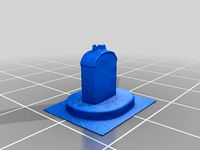
Tea Caddy Used at Edenton Tea Party in 1774 by smlee
...er house,” north carolina history project, accessed november 3, 2014, http://www.northcarolinahistory.org/encyclopedia/475/entry.
19Th
3ddd
$1
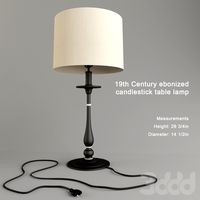
19th Century ebonized
...19th century ebonized
3ddd
19th century ebonized candlestick table lamp
measurements
height: 29 3/4in
diameter: 14 1/2in
turbosquid
$19

19th Century building
... available on turbo squid, the world's leading provider of digital 3d models for visualization, films, television, and games.
turbosquid
$1
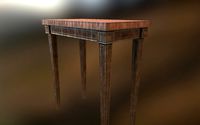
19th Century Table
... available on turbo squid, the world's leading provider of digital 3d models for visualization, films, television, and games.
design_connected
$18

French 19th c. Chaise A
...french 19th c. chaise a
designconnected
n/a french 19th c. chaise a armchairs computer generated 3d model. designed by n/a.
design_connected
$4

French 19th c. Table
...french 19th c. table
designconnected
n/a french 19th c. table coffee tables computer generated 3d model. designed by n/a.
3d_export
$25

Set of buildings of the 19th-20th century
...h century contains buildings in the entourage of the industrial revolution of the 19th-20th century, set consists of 5 buildings.
3ddd
free

19TH C. KEYHOLE METAL SQUARE
...19th c. keyhole metal square
3ddd
restoration hardware
19th c. keyhole metal square
turbosquid
$45

19th Century Bath House
...lty free 3d model 19th century bath house for download as fbx on turbosquid: 3d models for games, architecture, videos. (1682622)
turbosquid
$10

French Villa 19th Century
...y free 3d model french villa 19th century for download as stl on turbosquid: 3d models for games, architecture, videos. (1669905)
turbosquid
$17

19th C Bronze Gongs
...free 3d model 19th c bronze gongs for download as max and fbx on turbosquid: 3d models for games, architecture, videos. (1215544)
Children
3d_export
$15

children room
...children room
3dexport
children room
3d_export
free

childrens
...childrens
3dexport
3d_export
$10

childrens bedroom
...childrens bedroom
3dexport
childrens bedroom 3dmax vray
3d_export
$10

childrens bedroom
...childrens bedroom
3dexport
childrens bedroom 3dmax vray
3d_export
$10

childrens bedroom
...childrens bedroom
3dexport
childrens bedroom 3dmax vray
3d_export
$10

childrens bedroom
...childrens bedroom
3dexport
childrens bedroom 3dmax vray
3d_export
$10

childrens bedroom
...childrens bedroom
3dexport
childrens bedroom 3dmax vray
3d_export
$10

childrens bedroom
...childrens bedroom
3dexport
childrens bedroom 3dmax vray
3d_export
$10

childrens bedroom
...childrens bedroom
3dexport
childrens bedroom 3dmax vray
3d_export
$10

childrens bedroom
...childrens bedroom
3dexport
childrens bedroom 3dmax vray
Shoe
3d_ocean
$10

Shoes
...shoes
3docean
adidas colorful shoes nike shoe shoes sports
3d model of sports shoes
3d_ocean
$8

Shoes
...shoes
3docean
cloth shoes
women shoes
archibase_planet
free

Shoes
...shoes
archibase planet
shoes open shoes open toed shoes
shoes n151112 - 3d model (*.gsm+*.3ds) for interior 3d visualization.
archibase_planet
free

Shoes
...shoes
archibase planet
shoes open shoes open toed shoes
shoes n120513 - 3d model (*.gsm+*.3ds) for interior 3d visualization.
archibase_planet
free

Shoes
...shoes
archibase planet
shoes open shoes open toed shoes
shoes n280614 - 3d model (*.gsm+*.3ds) for interior 3d visualization.
archibase_planet
free

Shoes
...shoes
archibase planet
court shoes footwear shoes
shoes - 3d model for interior 3d visualization.
archibase_planet
free

Shoes
...base planet
shoes high heels evening shoes high heels shoes
shoes n140713 - 3d model (*.gsm+*.3ds) for interior 3d visualization.
archibase_planet
free

Shoes
...chibase planet
shoes open shoes high heels high heels shoes
shoes n231013 - 3d model (*.gsm+*.3ds) for interior 3d visualization.
archibase_planet
free

Shoes
...shoes
archibase planet
court shoes patent-leather shoes footwear
black shoes n060707 - 3d model for interior 3d visualization.
3d_export
$7

shoes
...shoes
3dexport
shoes man
Century
3ddd
$1

Century Furniture
.../www.centuryfurniture.com/gallery/showitem.aspx?sku=639-532
century furniture dining room windowpane arm chair 639-532
3d_export
$7

mid century chair
...mid century chair
3dexport
mid-century type dining chair
turbosquid
$10

Century Chair
...free 3d model century chair for download as max, fbx, and obj on turbosquid: 3d models for games, architecture, videos. (1711388)
turbosquid
$20

Century Car
... available on turbo squid, the world's leading provider of digital 3d models for visualization, films, television, and games.
3ddd
$1

Century Furniture Saturn Chair
...century furniture saturn chair
3ddd
century furniture
century furniture saturn chair
3d_export
$65

century avenue
...century avenue
3dexport
simple rendering of the scene file
3ddd
free

Торшер Century Terra
...ra
3ddd
century terra
модель торшера century terra делалась в archicad`е. только провод был добавлен в максе, ну и рендер конечно
3ddd
$1

Стул Century Antiques
...стул century antiques
3ddd
стул фирмы century классический с текстурами и материалами. рендерено в максе+vray.
3ddd
$1
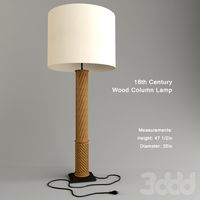
18th Century Wood
...18th century wood
3ddd
lucca antiques
18th century wood column lamp
measurements:
height: 47 1/2in
diameter: 20in
3ddd
free

Комод Century furniture
...а: century furniture
модель: chinese credenza
артикул: 609-403
ширина: 198 см
высота: 89,5 см
глубина: 59 см
в архиве 3dsmax 2010
Leather
3d_ocean
$2
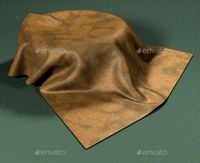
Leather
...leather
3docean
fabri high resolution interior leather
fabric for interior
3d_ocean
$7

Leather Seat
...leather seat
3docean
amrchair build chair home house leather leather seat lounge seat sofa
leather seat
3d_ocean
$4

Banquette leather
...banquette leather
3docean
banquette chear leather stool wood
leather banquette on wooden legs.
3d_ocean
$18
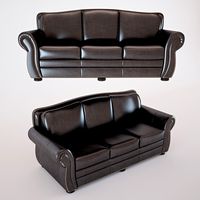
Leather Sofa
...or leather old leather sofa
leather sofa presidential custom ballentine collection 3d model polys: 39932 / meshsmoth 2 it. 251792
3d_export
$5

sofa leather
...sofa leather
3dexport
sofa leather
3d_export
$5

leather armchair
...leather armchair
3dexport
leather armchair
3ddd
$1

leather couch
...leather couch
3ddd
кожаный
3d model of leather couch with a satin cover. leather texture is 2500x2500pix
3ddd
$1

Leather Poof
...leather poof
3ddd
пуф
leather poof
3ddd
$1

Leather Poof
...leather poof
3ddd
пуф
leather poof
3ddd
$1

Dyed leather
...dyed leather
3ddd
dyed leather chair
